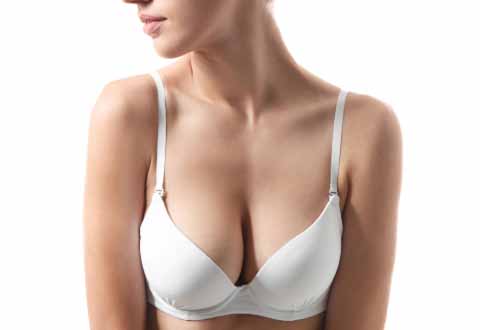Breast Augmentation FAQ
Breast Augmentation FAQ

Breast Augmentation Frequently Asked Questions
It is a good idea for women to have an understanding of breast augmentation before they decide to have the procedure. Dr. Lee compiled common breast augmentation questions to provide valuable information. If your questions are unanswered, please contact us and our staff will be happy to assist you.
Unfortunately, RAMQ does not cover cosmetic surgery expenses. Breast augmentation surgery is not insurable by RAMQ. Additionally, it is also unusual for private insurance companies to extend medical coverage to include services for cosmetic surgery. Directly contact your medical insurance carrier to learn about your umbrella of services. You should always inquire about your medical coverage if you are uncertain.
Dr. Chen Lee sets a global fee for surgical breast augmentation services. This “global fee” for breast augmentation includes breast implants, the use of a private surgical facility, professional services rendered by a board-certified anesthetist, as well as Dr. Lee’s professional services. Contact us by phone if you wish to explore packages to finance your breast augmentation procedure. We will work to see if you qualify for a financial package.
Most patients find that their breasts are augmented permanently with a single surgery. However, implantable synthetic prostheses should not be considered lifetime medical devices. All synthetic implantable medical devices (such as heart valves, brain shunts, orthopedic joints, and breast implants) can malfunction and fail.
Most breast implants can be surgically positioned through a 3.5 to 5 cm incision hidden in a natural skin crease of the body. The resulting scar is short in length and well camouflaged. Scars from breast augmentation are easily covered by beachwear and often imperceptible when nude. Your body morphology will determine the optimal incision for your breast augmentation. A personal consultation with Dr. Chen Lee will provide you with the information to make the best choice for your breast augmentation.
Patients undergoing submammary breast augmentation (implants over the muscles) do not experience as much pain as with submuscular breast augmentation (implants under the muscle). Discomfort from submammary breast augmentation is often mild, lasting less than 1 week, and usually well controlled with Tylenol. However, patients undergoing submuscular placement of breast implants may experience a greater degree of pain and discomfort. Usually, an opiate medication is prescribed to control this discomfort. Fortunately, the pain subsides rapidly in the two weeks following breast augmentation. During your consultation, Dr. Chen Lee will use your body morphology to recommend the best implant position to yield the best aesthetic outcome and the least degree of discomfort expected following breast augmentation.
Most patients are able to resume light office work 2 to 4 weeks following their breast augmentation. A temporary 6-week absence is advisable for patients engaged in strenuous occupations that require extensive physical effort.
Wound healing is sufficiently mature to resume normal sexual intimacies and breast stimulation approximately 1 month after breast implantation surgery.
Following breast augmentation, patients often experience temporary loss of erotic and general sensitivity to the breasts and nipples. In most instances, normal sensation returns spontaneously and naturally within a month after breast augmentation surgery.
Modern techniques of breast augmentation do not harm the breast tissue and will not alter your ability to lactate and produce breast milk. Your ability to breastfeed following the surgical placement of breast implants should not be affected.
There is no scientific evidence that relates breast implantation to breast cancer. Thus, your risk of developing breast cancer is not altered.
While the risk of breast cancer is not elevated following breast augmentation, screening is still necessary and encouraged. Common methods for detecting breast cancer include mammography, ultrasound, and magnetic resonance imaging (MRI). Mammograms can still be performed, however, modified techniques such as breast compression to enhance the view of the breast tissue is often necessary for an effective breast mammogram. To better plan, your breast investigations, the physician managing your breast cancer prevention routine should be made aware of your breast augmentation.
Next Steps…
To learn more about a procedure or book a consultation
- Monday – Friday9:00am to 5:00pm

